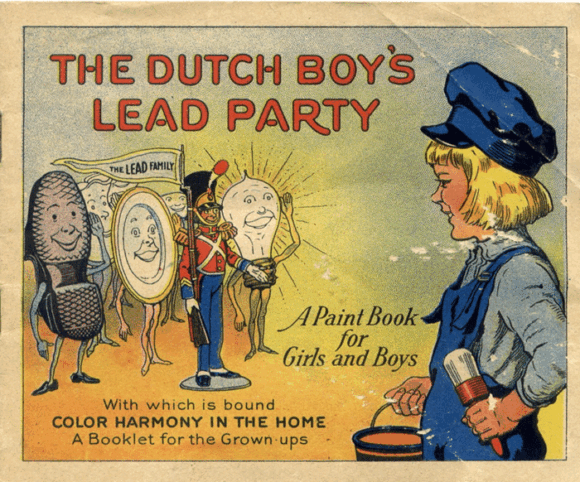Taking a calculated risk by selling a hazardous product isn’t the same as intentionally causing harm. For that reason, insurers must cover a court judgment that requires the company that sold Dutch Boy lead paint to pay $101 million into a California abatement fund, a New York appellate court ruled on March 24.
The 1st Department of the New York Appellate Division affirmed a decision that found Lloyd’s of London and other insurers liable for NL Industries’ claim. The appellate panel rejected the insurers’ argument that the award was excluded from coverage because the paint manufacturer promoted the use of lead paint despite knowing that it posed a serious risk.
“That is not a clear finding that NL either expected or intended to harm any person or property,” the opinion says.
Santa Clara County filed a lawsuit in 2000 against NL Industries, ConAgra Grocery Products Co. and Sherwin-Williams Co. under the California’s public nuisance law. Nine other California cities and counties joined the action, which sought to hold manufacturers responsible for promoting lead paint for use in homes despite their knowledge that the product was highly toxic.
NL was a member of the Lead Industries Association, a trade group that sponsored an advertising campaign in the 1930s that promoted the use of white lead carbonate pigment in paint. At the time, it was already widely known that lead dust is poisonous. In fact, NL’s representative was present when LIA’s board of directors in 1930 discussed an article in the U.S. Daily that reported babies were contracting lead poisoning from chewing paint from toys, cradles and woodwork more frequently than previously thought.
After a six-week trial, the Santa Clara County Superior Court ordered the three companies to pay $1.1 billion into a lead paint abatement fund. The 6th District Court of Appeal amended the ruling to require the companies to pay for abatement of only homes built before 1951, reducing the abatement fund amount to $409 million.
The companies appealed, but the California Supreme Court refused to hear the case. The defendants agreed to pay $305 million to settle the lawsuit in 2017. NL’s share is $101.6 million.
When NL Industries turned to its former insurers for coverage, Ace and Lloyd’s refused. They said the company had intentionally caused the harm that prompted Santa Clara County’s lawsuit.
Lloyd’s and 15 other insurers filed a lawsuit in the New York County Supreme Court seeking a declaration that NL’s insurance policies did not provide coverage. The action involves 320 insurance policies spanning over 70 years, according to court documents.
The insurers argued, 1, that NL Industries’ actions were intentional; 2, the court order was not for “damages” or “expenses” as required by the policy; and 3, the liability was not imposed because of property damage or bodily injury.
Supreme Court Judge Andrea Masley found that the order to pay into the abatement fund was covered by the policies. She said in her order that some of the insurance policies did not contain an exclusion for intentional acts. And she said even the polices that exclude damages caused by intentional acts still provide coverage for NL’s actions.
Masley, citing prior case law, said “in New York there is a distinction between knowledge of a risk of hazardous consequences of one’s actions and the intention to cause harm.”
She also rejected the argument that the court order wasn’t a result of “damages.” The order says that the fund was created to remediate the danger caused by deteriorated lead paint on an estimated 5 million California homes. That amounts to “damages under the relevant policy language,” the order says.
Finally, Masley disagreed with the insurers’ argument that there was no covered property damage.
“While this court agrees that property damage and bodily injury are not elements of the representative public nuisance claim, there is a connection between the lead poison injuries to the children residing in the buildings containing the lead paints promoted by NL and the property damage to those buildings as a result of NL’s promotion of lead paint,” the order states.
That finding directly conflicts with a decision by the Ohio Court of Common Pleas in 2013, which found that insurers had no duty to pay into the abatement fund on behalf of the company that manufactured Glidden paint because there was no property damage covered by the policies.
The appellate panel said in its opinion that it agrees with Masley that the Ohio decision was incorrect, assuming that insurance policies issued to Glidden’s manufacturer had the exact same language as NL Industries’ policies.
“The nuisance liability is based on the widespread bodily injury/property damage that the hazard of lead paint in homes caused and continues to cause,” the appellate court said.
Was this article valuable?
Here are more articles you may enjoy.


 Lawsuit Filed in Case of Teen Who Died After Eating Spicy Chip as Part of Online Challenge
Lawsuit Filed in Case of Teen Who Died After Eating Spicy Chip as Part of Online Challenge  AIG Files Amended Suit Against Former Execs, Dellwood Insurance
AIG Files Amended Suit Against Former Execs, Dellwood Insurance  Global IT Collapse Puts Cyber Firm CrowdStrike in Spotlight
Global IT Collapse Puts Cyber Firm CrowdStrike in Spotlight  Allstate’s National General Sued by DOJ Over Alleged Force-Placed Insurance ‘Scheme’
Allstate’s National General Sued by DOJ Over Alleged Force-Placed Insurance ‘Scheme’ 